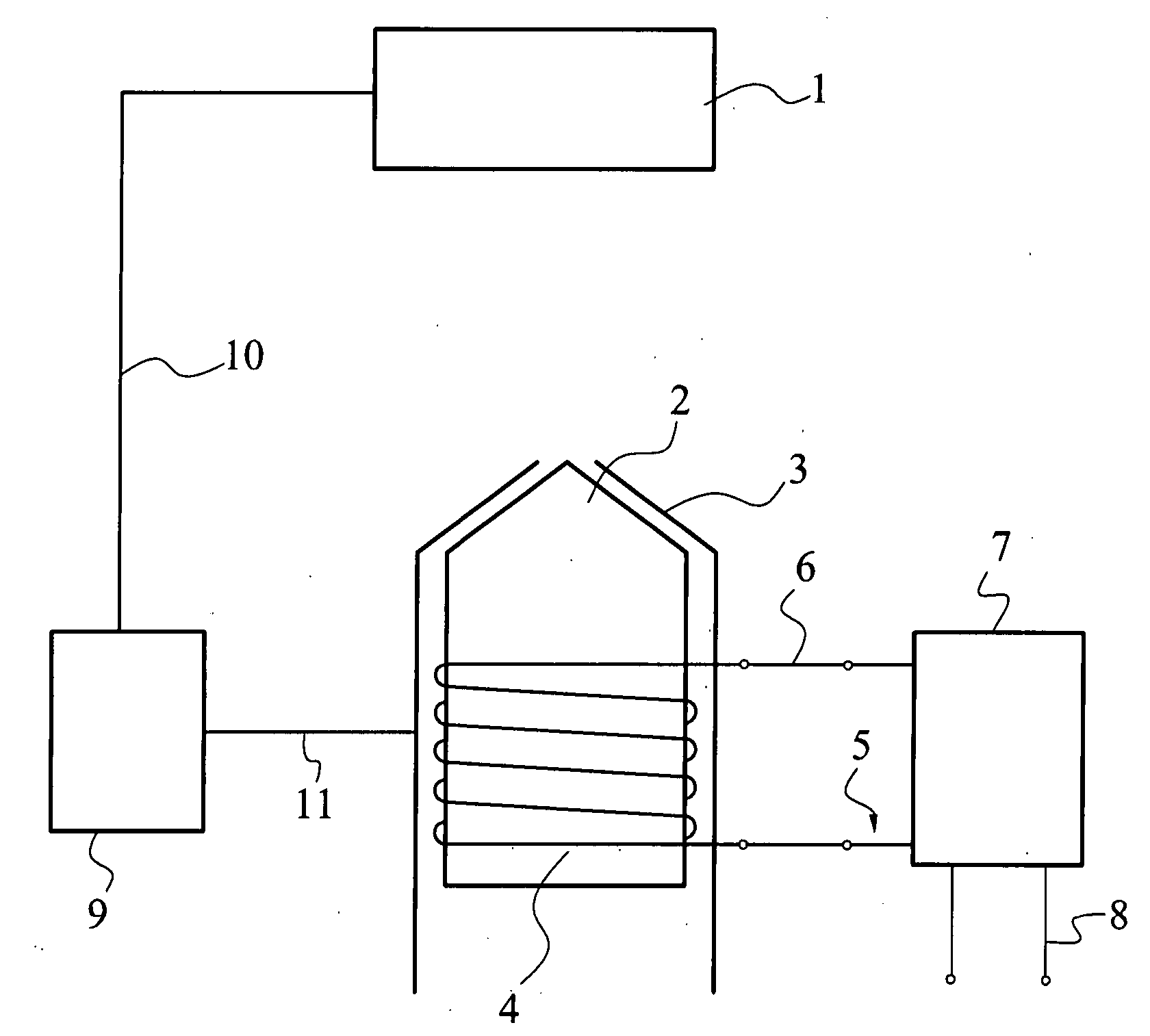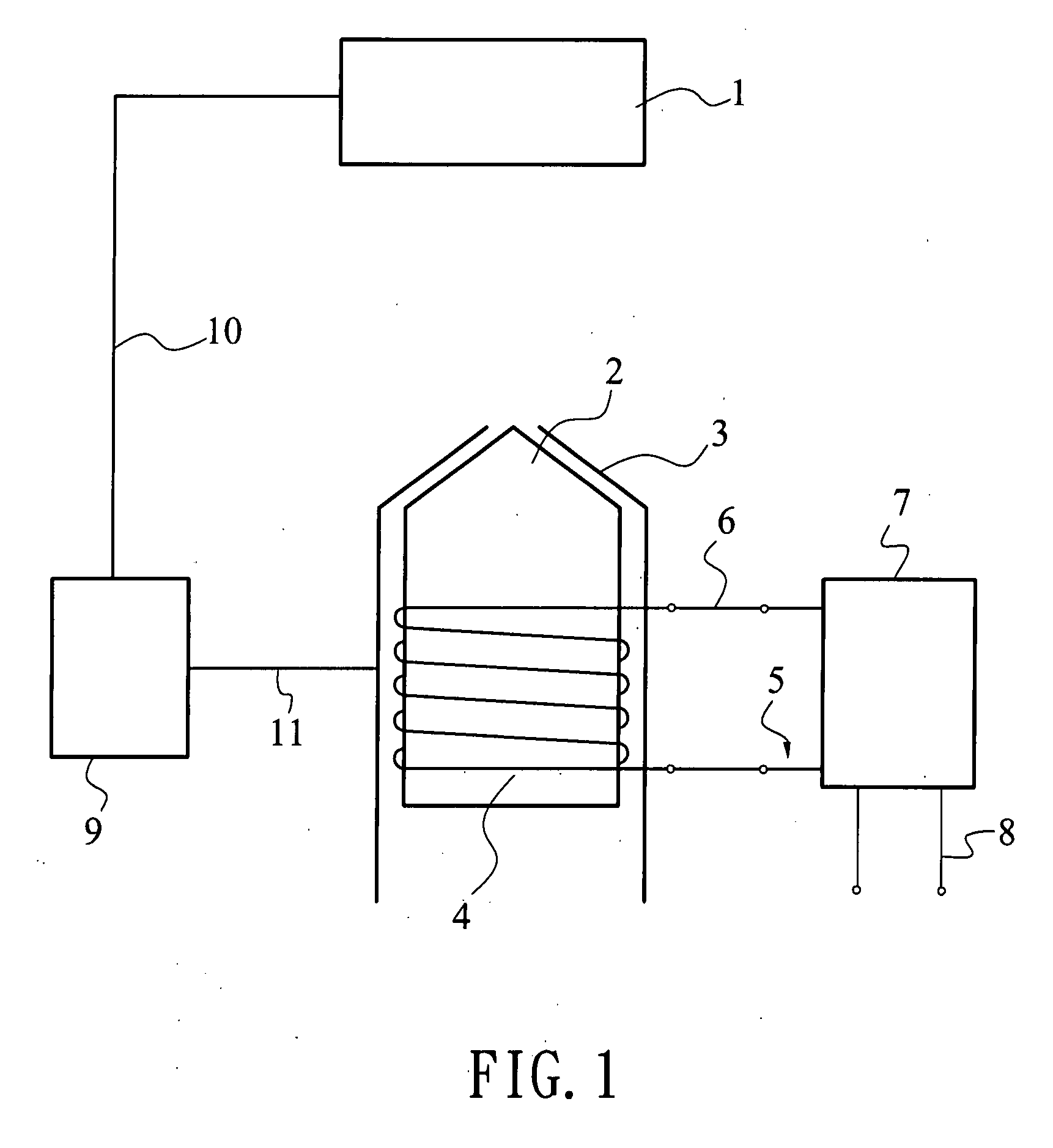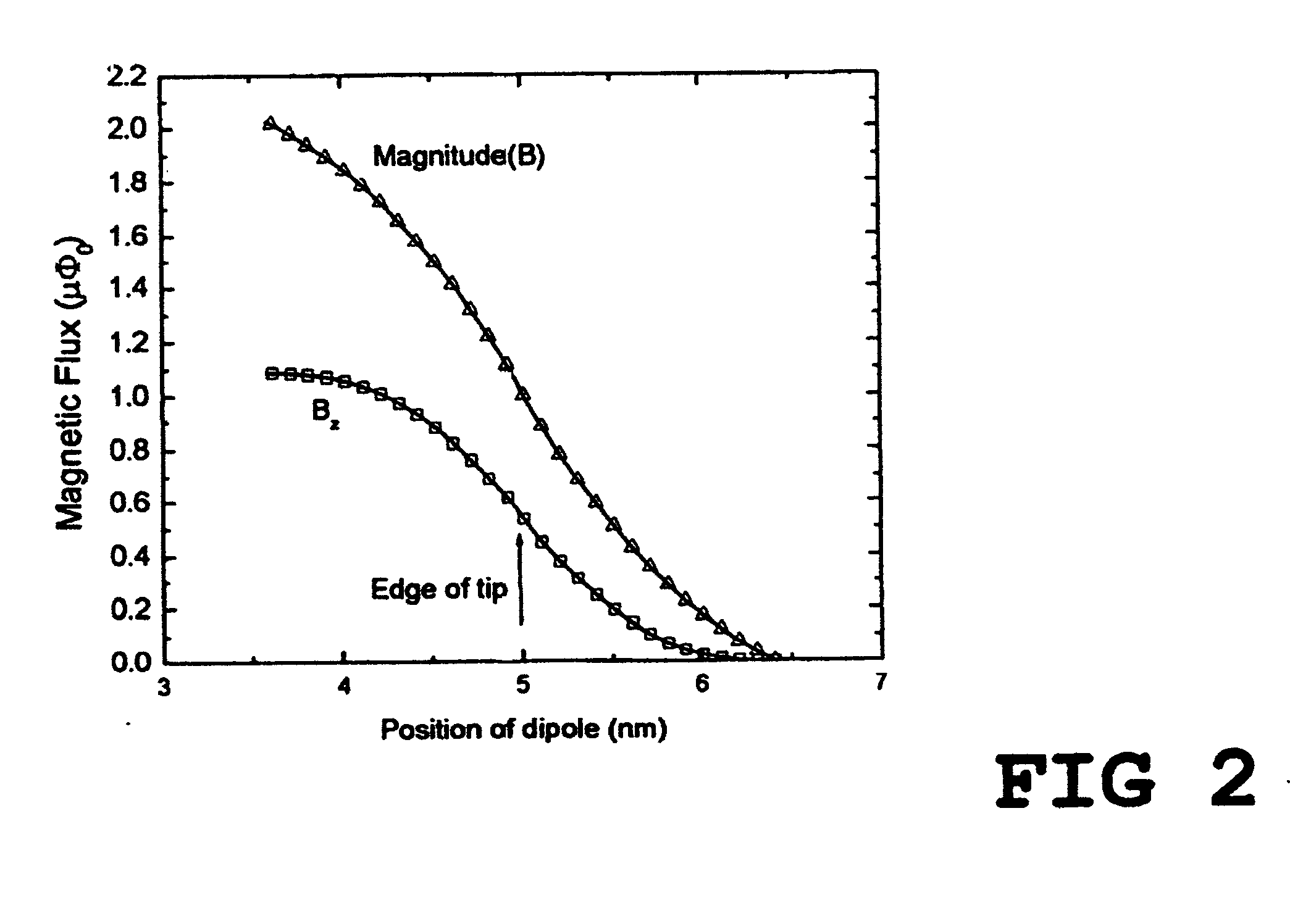Apparatus for detecting magnetic signals and signals of electric tunneling
a technology of electric tunneling and apparatus, applied in the field of apparatus for detecting magnetic signals and signals of electric tunneling, can solve the problems of mrfm not being able to detect the magnetic field generated by current, the application of this instrument is limited, and the requirement of a cryogenic environment and modest spatial resolution, so as to improve the efficiency of flux coupling, improve the spatial resolution of the apparatus, and improve the effect of spatial resolution
- Summary
- Abstract
- Description
- Claims
- Application Information
AI Technical Summary
Benefits of technology
Problems solved by technology
Method used
Image
Examples
Embodiment Construction
[0017]FIG. 1 schematically illustrates the embodiment of the present invention. A high-permeability material with tiny residual moment is used to fabricate the tip 2. The preferred material is Permalloy or u-metal that are the alloy of Nicole, Iron and some other transition metals. Their bulk permeability has a typical value larger than 104. The magnetic field from sample 1 induces magnetization in the tip 2. The large permeability of the tip 2 can magnify the magnetic signal. In order to reduce the magnetic noise and increase the spatial resolution, the magnetic shield 3 covers the tip 2 and the pick-up coil 4 except the very apex of the tip. The shield can be made of a high-permeability material or a superconductor. There are several slits formed on the shield to suppress eddy currents or supercurrents. Through the pick-up coil 4 inductively coupled to the tip 2 or directly wound on the tip, the magnetic signal is transferred to the magnetic sensitive device 7 in the form of magne...
PUM
 Login to View More
Login to View More Abstract
Description
Claims
Application Information
 Login to View More
Login to View More - R&D
- Intellectual Property
- Life Sciences
- Materials
- Tech Scout
- Unparalleled Data Quality
- Higher Quality Content
- 60% Fewer Hallucinations
Browse by: Latest US Patents, China's latest patents, Technical Efficacy Thesaurus, Application Domain, Technology Topic, Popular Technical Reports.
© 2025 PatSnap. All rights reserved.Legal|Privacy policy|Modern Slavery Act Transparency Statement|Sitemap|About US| Contact US: help@patsnap.com



